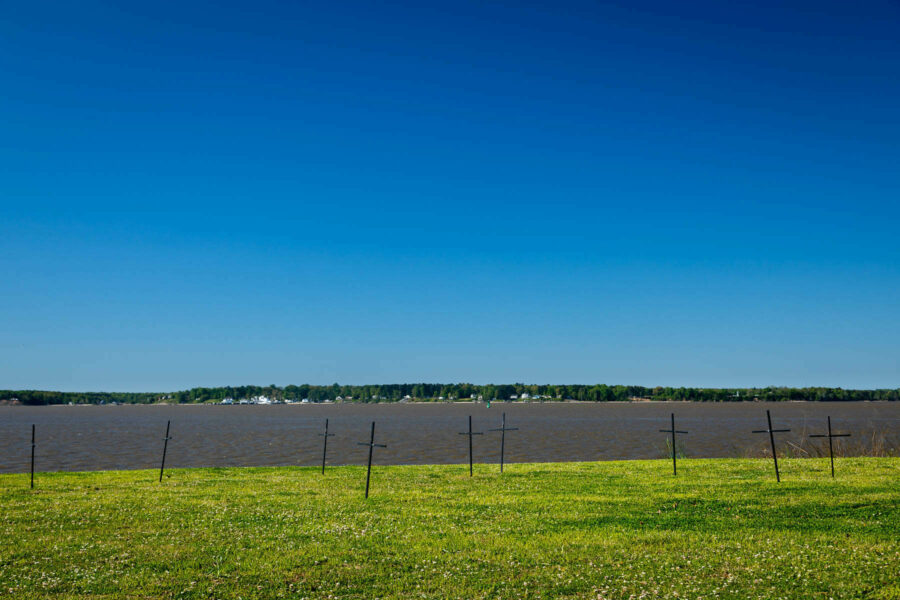Discovering a lost past
Long thought to be lost to erosion, the footprint of the Jamestown fort reveals secrets of past settlers

The fifteenth of June, we had built and finished our Fort, which was triangle wise: having three Bulwarkes at every corner, like a halfe Moone, and four or five pieces of Artillerie mounted in them.—George Percy
After English settlers arrived on Jamestown Island in 1607, they built a fort to protect themselves from the nearby Powhatan Indians. However, by the 1620s, the fort had fallen into disrepair and by the end of the century, the island became a tobacco plantation. Most of the fort’s remaining buildings were torn down in 1861 by the Confederate army to build an earthen fort during the Civil War. By the turn of the century, the only 17th-century structure above land was the church tower.
The fort changed over time not only due to changing needs of the people who lived there, but also due to erosion. In 1837, there were already accounts claiming that the fort was submerged in the James River, and many thought that whole fort had been lost to erosion. To halt erosion and protect what was left, a seawall was constructed in 1900. By then, most people assumed that the site of the 1607-2624 fort had been washed away.
Sixty-three years later, Dr. William Kelso's visit to Jamestown as a graduate student started him down a path to challenge that theory. He thought that the church tower was actually built at the center of the original fort, based on an account from the colony secretary William Strachey who wrote that “a pretty chapel” stood “in the middest” of the fort. Kelso figured that any later church would have been built on or near the site of the original church since the colonists saw that ground as sacred. He and other archaeologists took a second look at artifacts, notes and findings from researchers before them and came to a different conclusion: the footprint of the fort was still on land.
In 1994, after 10 years of negotiating with Preservation Virginia, Kelso and his team were able to begin a digging project to find the site of the fort. Digging began at a site between the church tower and James River, and within three years the team found enough evidence to prove that the original fort site was not completely lost to erosion, as had been previously thought. After more than two decades of exploration, the team unearthed the trenches used to support the walls of the fort, outlines of buildings inside the fort and more than two million artifacts that teach us about the people who lived in and around the fort.
Learn more about the history of the Chesapeake Bay region.

Comments
Can you write more about Jamestown? That would be great! Your writing is amazing
Thank you!
Your comment has been received. Before it can be published, the comment will be reviewed by our team to ensure it adheres with our rules of engagement.
Back to recent stories